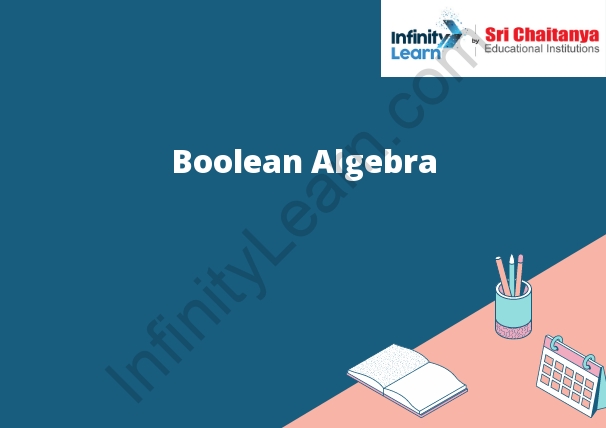Table of Contents
An Introduction to Boolean Algebra
Boolean algebra is a branch of mathematics that deals with the properties of operations on the set of all logical values, which are usually denoted by the symbols 0 and 1. The most important operation in Boolean algebra is the logical conjunction, usually denoted by the symbol ∧. This operation is associative, meaning that for all three logical values a, b, and c, a ∧ (b ∧ c) = (a ∧ b) ∧ c. The logical disjunction, usually denoted by the symbol ∨, is also associative. The logical negation, usually denoted by the symbol ¬, is associative and commutative.
The most important property of the logical conjunction is the distributive law, which states that for all three logical values a, b, and c, a ∧ (b + c) = a ∧ b + a ∧ c. The most important property of the logical disjunction is the commutative law, which states that for all three logical values a, b, and c, a ∨ (b ∨ c) = (a ∨ b) ∨ c.

Boolean Algebra Law
The Boolean algebra law states that the product of two Boolean variables is equal to the sum of their individual products. The law is also known as the distributive law.
What is Boolean Algebra?
Boolean algebra is a mathematical system that uses the operators AND, OR, and NOT to manipulate algebraic equations. It was developed by George Boole in the mid-19th century.
The fundamental operators which function on Boolean algebra laws are
The following table summarizes the Boolean algebra laws:
Boolean Algebra Laws
There are a number of Boolean algebra laws which can be used to simplify complex expressions. These laws are summarized in the following table:
Law Symbol Description Associative A ∙ (B ∙ C) = (A ∙ B) ∙ C Commutative A ∙ B = B ∙ A Identity I A ∙ I = A Inverse I−1 A ∙ I−1 = A Absorption A ∙ (A ∙ B) = A Distributive A ∙ (B ∙ C) = (A ∙ B) ∙ (A ∙ C)
Associative Law
The associative law states that the order of multiplication doesn’t matter. That is, the following expressions are all equal:
A ∙ (B ∙ C) = (A ∙ B) ∙ C
A ∙ (B+C) = (A ∙ B) + (A ∙ C)
A ∙ (B−C) = (A ∙ B) − (A ∙ C)
Commutative Law
The commutative law states that the order of addition doesn’t matter. That is, the following expressions are all equal:
A ∙ B = B ∙ A
A+B = B+A
A−B = B−A
Identity Law
The identity law
Associative Law
For every number “n” there is an associated number “n” called the inverse of “n”. The inverse of “n” is the number that, when multiplied by “n”, results in 1.
The inverse of 5 is 1/5.
The inverse of -3 is 3/1.
Distributive Law
For every action, there is an equal and opposite reaction.
Commutative Law
For any two numbers a and b, a + b = b + a.
This law states that the order of addition does not matter.
AND Law
The law prohibits discrimination in the workplace on the basis of sex, race, color, national origin, religion, age, disability, and genetic information.
The law also requires employers with fifteen or more employees to provide reasonable accommodations to employees with disabilities, unless doing so would create an undue hardship.
OR Law
The LRA is a federal law that protects employees from discrimination in the workplace. The LRA prohibits employers from discriminating against employees on the basis of race, color, religion, sex, national origin, age, disability, or genetic information.
Absorption Law
The absorption law states that the total absorption of a particular wavelength of light is equal to the sum of the absorptions of the individual photons.
Inversion Law
If $\vec{x}
eq 0$, then $\vec{x}^{-1}
eq 0$.
Boolean Expression for Logic Gates
AND gate:
A && B
OR gate:
A || B
NOT gate:
!A
Fun Fact
The word “hello” is derived from the Old English word “halwende” which means “to greet”.
Solved Examples:
Question:
In the figure shown, a particle of mass m is released from rest at point A and slides down a frictionless incline of length L.
(a) Find the speed of the particle at point B.
(b) Find the total work done on the particle by the gravitational force between points A and B.
(a) The speed of the particle at point B is found by using the equation:
v = √(2gh)
where h is the height of point B above point A, and g is the gravitational constant.
v = √(2gh)
v = √(2(9.8 m/s2)(L))
v = 6.2 m/s
(b) The total work done on the particle by the gravitational force between points A and B is found by using the equation:
W = Fd
where W is the work done, F is the gravitational force, and d is the distance traveled by the particle.
W = Fd
W = (mgL)d
W = (m(9.8 m/s2)(L))d







